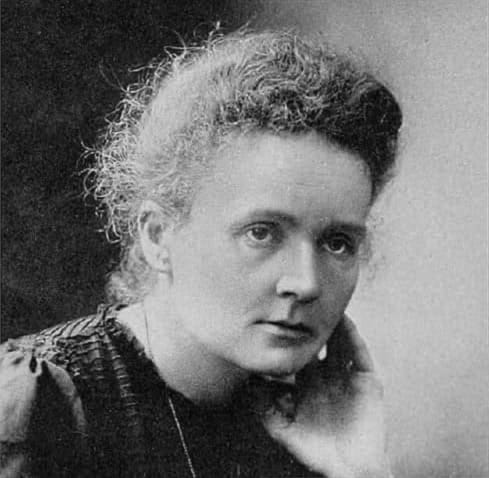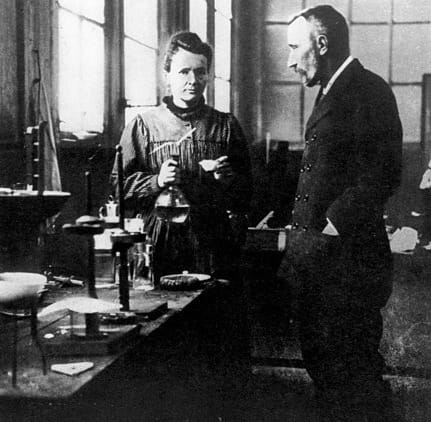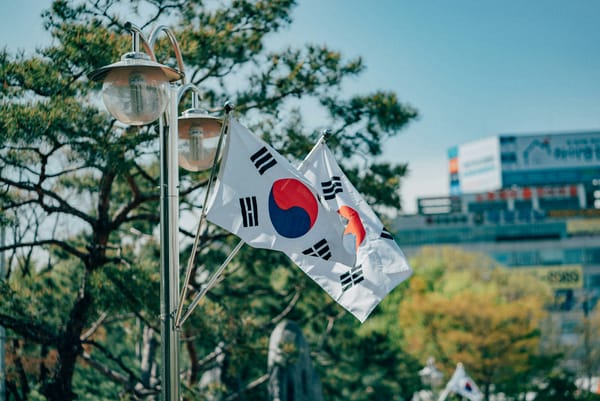Women in Science: Marie Curie

Marie Curie, a Polish-French physicist and chemist, was the first woman to win a Nobel Prize, as well as the only woman to be awarded the prize in two different fields. She was awarded the Nobel Prize for Physics together with her husband, Pierre Curie, in 1903. And in 1911 she was the sole winner of the Nobel Prize for Chemistry.
An Early Passion for Academics
Marie Curie, née Maria Sklodowska, was born in Warsaw, Poland on November 7, 1867. As a child, she received a general education in local schools and some scientific training from her father who was a teacher of mathematics and physics. She was known to be a diligent student with a hard work ethic, sometimes neglecting food and sleep to study. At the age of 16, she won a gold medal for completing her secondary education at the Russian lycée. However, because of her gender, she was not allowed to continue her higher education at any Russian or Polish universities; so she worked as a teacher and governess for several years and provided financial aid to her father who had lost his savings through bad investments. From her earnings, she was able to finance her sister Bronislawa's medical studies in Paris, with the agreement that Bronislawa would in turn later help her to get an education.
The Move to Paris
In 1891, Skłodowska went to Paris, now using the name Marie, to continue her studies at the Sorbonne where she obtained Licentiateships in Physics (1893) and the Mathematical Sciences (1894). She followed the lectures of Pail Appell, Gabriel Lippmann and Edmond Bouty; she also met well-known physicists such as Jean Perrin, Charles Maurain and Aimé Cotton. To make ends meet, she would clean the glassware in university labs and rationed her intake of food until she collapsed of weakness.
In the spring of 1894, she met Pierre Curie, a professor in the School of Physics. In the following year, they were married. This marriage marked the start of a partnership between the two, as their discovery of polonium and radium would grant them global recognition.
A Modest Beginning
Pierre earned 6,000 francs per year, about 30,000 dollars today, while Marie worked in his laboratory and prepared for an exam that would certify her to teach girls. Their first daughter, Irène, was born in 1897. The difficult pregnancy had forced Marie to spend less time in the lab; however, when her mother-in-law died weeks after the birth, her father-in-law, Eugene, offered to take care of Irène as Marie was gathering data for a doctoral thesis.
Her second daughter, Eve, was born in 1904. By that point, Marie had grown used to criticism from her colleagues who thought she spent too much time in the lab and not enough with her daughters. After all, she was a woman, and many expected her to put a hold on her career to be a stay-at-home mother to her children.
The Discovery of Radioactivity
Following the discovery of radioactivity by Henri Becquerel in 1896, the Curies were inspired in their research and analyses, leading to the isolation of polonium, named after the country of Marie's birth, and radium. Curie also developed methods for the separation of radium from radioactive residues so that its properties could be studied and characterised; its therapeutic properties were of particular interest to her.
On the results of this research, Marie Curie received her doctorate of science in June 1903 and, along with Pierre, was awarded the Davy Medal of the Royal Society. That same year, they shared with Becquerel the Nobel Prize for Physics for the discovery of radioactivity. Some years prior, Curie was appointed lecturer in physics at the École Normale Supérieure for girls in Sèvres where she introduced a teaching method based on experimental demonstrations.

After winning the Nobel Prize, rumours began to circulate that Marie was only a mere assistant to Pierre in their research about radioactivity, deeming her unworthy of the prize.
“Errors are notoriously hard to kill, but an error that ascribes to a man what was actually the work of a woman has more lives than a cat.” - British physicist, Hertha Ayrton
Pierre earned himself a full professorship at the Sorbonne whilst Marie was not promoted. However, in December 1904 she was appointed chief assistant in the laboratory directed by Pierre Curie. This gave her free range to conduct experiments and for the first time, be paid for it.
The Science Behind the Discovery of Radioactivity
In March 1896, French physicist Henri Becquerel opened a drawer and accidentally discovered spontaneous radioactivity. His initial intention was to study the properties of X-rays which had been discovered in 1895 by Wilhelm Roentgen. To do this, he exposed potassium uranyl sulfate to sunlight and then placed it on photographic plates wrapped in black paper. He hypothesised that the uranium would absorb the sun's energy and then emit it as x-rays. His theory was disproved, however, when his experiment failed because it was overcast in Paris.
Despite this, Becquerel still decided to develop his photographic plates anyway. Surprisingly, the resulting images were strong and clear, proving that the uranium emitted radiation without an external source of energy such as the sun.

To prove that the radiation he discovered could not be X-rays, Becquerel used an apparatus in which a magnetic field was implemented to manipulate the radioactive substances. X-rays are neutral and thus cannot be bent in a magnetic field. However, the new radiation was bent by the magnetic field proving that they had to be charged and hence different than x-rays. When different radioactive substances were put in the magnetic field, they deflected in different directions or not at all, showing that there were three classes of radioactivity: negative, positive, and electrically neutral.
The term radioactivity was coined by Marie Curie, who began investigating the phenomenon. She, together with her husband, extracted uranium from ore and found that the leftover ore showed more activity than the pure uranium. They concluded that the ore contained other radioactive elements which led to the discoveries of the elements polonium and radium.
A Turning Point
The sudden death of Pierre Curie on April 19, 1906, marked a turning point in Marie Curie's career. Decisively, she devoted all her effort to completing the scientific work that they had undertaken together. She was appointed to the professorship position that had been left vacant on her husband's death, making her the first woman to teach in the Sorbonne.
In 1910, her fundamental treatise on radioactivity was published. In 1911 she was awarded the Nobel Prize for Chemistry for the isolation of pure radium. The construction of the laboratories of the Institut du Radium at the University of Paris was thus overseen by Curie, the advent of its completion took place in 1914.
With the help of her daughter Irène, Marie Curie devoted herself to developing the use of X-radiography throughout World War I. By 1918, the Radium Institute had become a universal centre for nuclear physics and chemistry. In 1922, Curie became a member of the Academy of Medicine, devoting her research to the study of the chemistry of radioactive substances and the medical applications of these substances.
Later Years
Marie Curie spent the rest of her life giving lectures in Belgium, Brazil, Spain and Czechoslovakia. She was also made a member of the International Commission on Intellectual Co-operation by the Council of the League of Nations. Furthermore, she oversaw the development of the Curie Foundation in Paris and the inauguration of the Radium Institute in Warsaw of which her sister Bronislawa became director.

One of her greatest achievements of this period was maintaining an abundant supply of radioactive sources for research in nuclear physics. Her abundant stockpile was an unrivalled instrument until the appearance of particle accelerators after 1930. Nevertheless, the existence at the Radium Institute of a stock of 1.5 grams of radium, along with radium D and polonium, contributed to the success of the experiments undertaken around the year 1930, particularly those performed by Irène Curie together with her husband Frédéric Joliot. Their work, made possible by Marie Curie, paved the way for the discovery of the neutron by Sir James Chadwick as well as their discovery in 1934 of artificial radioactivity.
It was only a few months after this discovery that Marie Curie died as a result of aplastic anaemia caused by exposure to radiation. In 1995, her ashes were enshrined in the Panthéon in Paris, making her the first woman to receive this honour for her own achievements. Since then, she has been highly regarded as a brilliant scientist who, despite adversity, managed to alter the course of humanity for many years to come.



